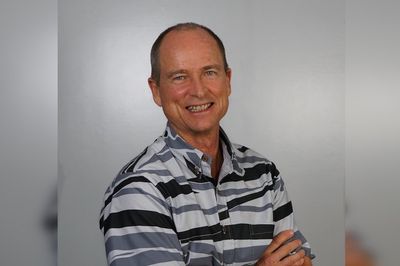Q&A
Why this entrepreneur sees a bright future for hydrogen innovation Houston's energy transition ecosystem

Patrick Sullivan of Oceanit joins the Houston Innovators Podcast to share the potential he sees for Houston's energy ecosystem to transition efficiently. Photo courtesy of Oceanit
While Patrick Sullivan lives on an island almost 4,000 miles away from Houston, the entrepreneur is no stranger to Houston's energy ecosystem.
Oceanit, founded in 1985 by Sullivan, is based in Hawaii, a portion of its customer base is based right here in Houston. Additionally, he opened his company's H2XCEL lab locally earlier this year.
“We are, indeed, in the middle of the sea, but we work around the world,” Sullivan, who serves as president and CEO of his company, says on the Houston Innovators Podcast. “What we do in Houston is interesting because we consider Houston the center of energy. And energy makes the world go around, and there’s just no two ways around it. Of course, there’s lots of transition going on, so it’s an exciting time to be doing energy.”
Learn more about Oceanit's presence in Houston and the impact the company is having on the energy transition in the podcast as well as the excerpt below.
EnergyCapital: What’s the opportunity you see with hydrogen?
Patrick Sullivan: The US has several millions of miles of methane pipelines, so if you start looking at loading hydrogen into those methane pipelines, you start displacing carbon. There are all sorts of interesting trade offs, but one of the challenges is this area called embrittlement. What that means is hydrogen is a little molecule, and when you put it next to a metal, sometimes it likes to hide in the metal, and over time, sometimes it builds up and then it can crack that metal. That’s called hydrogen embrittlement, and people are worried about that.
Turns out, we have developed a technology for a military application, and we can do things to metal without embrittlement. We’ve learned a lot over the years. We thought, what if we take what we’ve learned in the defense space and apply it to energy with the pipelines.
EC: What’s your goal with your new Houston-based H2XCEL lab that features your hydrogen embrittlement prevention technology?
PS: We can test those to failure right there in Houston.We’re talking to all the pipeline companies about getting their steel pipe and running through all these tests to show how it’s going to perform with all these different mixtures.
The idea is to get the community to see that when you integrate technology from different fields into the energy space, we can keep making progress.
It’s going to take time. But if we start reducing carbon and the use of fossil fuel today, we buy time for the planet.
EC: What’s the next big thing within tech that you’re working on?
PS: It’s a really interesting question, there’s so much going on right now, it’s really an exciting time in the tech space and the reason is because the world has been asleep at the switch for a while in terms of real technology.
One of the things we’ve put a lot of time and effort into is artificial intelligence. Large language models are definitely entertaining and have tons of opportunities. They’ve have got their pros and cons. We’ve worked with Noam Chomsky for years now, and our approach is based on Chomskyan grammar. The idea of human cognition is linguistic competency. When you speak, you’re mathematically efficient. It’s not random, it’s how human brains are put together. We built a system based on that hypothesis.
I think the reason AI is going to get more airtime too is the social and political consequences of misinformation.
— — —
This conversation has been edited for brevity and clarity.